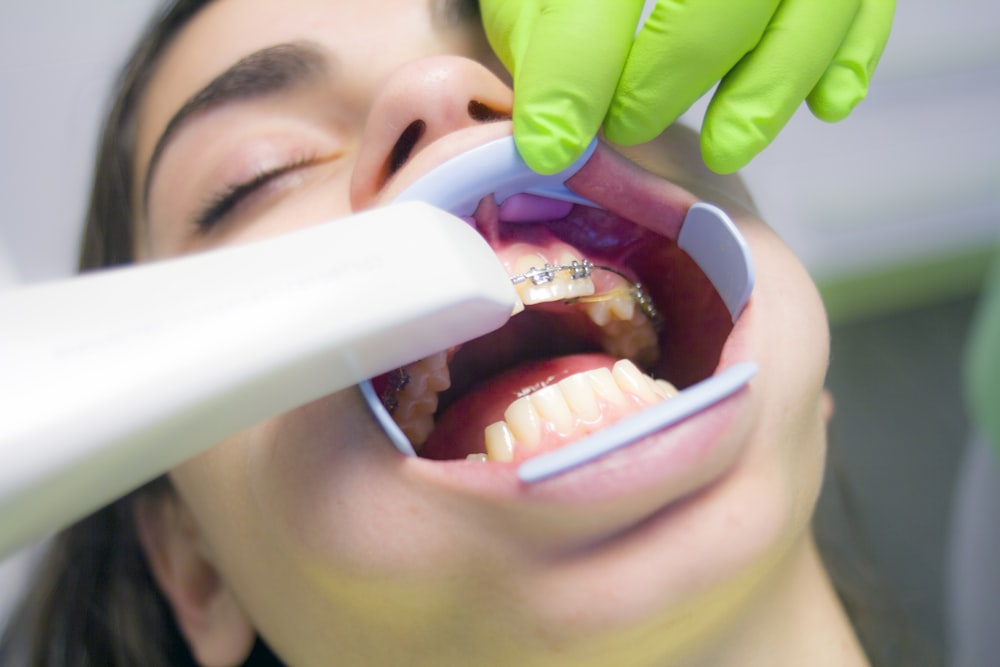What do orthodontists do?
Chances are you’ve seen those enviable before-and-after brace photos on Instagram where someone’s crooked teeth are magically transformed into a flawless movie star grin. The mastermind behind that dentistry magic? Orthodontists.
Unlike general dentists, orthodontists specialize in the intricate art and science of bite alignment and smile correction. And I do mean art – custom molding teeth, assessing facial growth patterns, and applying the physics of oral movement takes equal parts technical skills, spatial vision, and care for aesthetic beauty. Of course, there are the ubiquitous metal braces we all picture. But today’s orthodontists have a lot more than headgear up their sleeves – clear ceramic brackets for subtlety, 3D computer imaging for precision, and even invisible aligners are options.
Simply put – achieving symmetrical dental arches for improved function along with boosting both confidence and facial symmetry are an orthodontist’s superpowers. Whether you or your child need slight bite adjustments or total smile transformations, these are the elite specialists I’d turn to first for truly life-changing results inside and out.

Learning and Instruction
After finishing dental school, orthodontists complete an additional 2-3 years of focused education and training. We’re talking about honing spatial skills via wax bites, learning physics equations governing oral movement forces, and using mini screws to reposition jaws.
Residency culminates with intensive written and clinical board exams from the American Board of Orthodontics. Passing means you’re certified, but the learning doesn’t stop there! Orthodontists must continually update techniques through conferences and courses just to retain certification.
Conditions orthodontists treat
Orthodontists provide treatment for a range of issues impacting the teeth and jaw, including:
Crowded (misaligned) teeth
Metal or ceramic braces can incrementally straighten out crooked, rotated teeth when there’s inadequate room.
Bites Out of Alignment
Misaligned bites, such as overbites, underbites, and crossbites, can occur when upper and lower teeth do not fit together properly when biting down. To address this issue, orthodontists often require a mixture of braces, retainers, and growth guidance to make the necessary corrections.
Skeletal Abnormalities
Whether it’s correcting jaw size discrepancies or realigning the floor of the mouth – orthodontists have the diagnostic tools and treatments to transform complex issues.
Treatments orthodontists offer
Braces
Metal or ceramic brackets bonded to teeth incrementally tightened with wires over time remain the standard realignment method used by orthodontists. This tried-and-true approach shifts even severely misaligned teeth into proper position when done carefully over years.

Retainers
After braces or aligners complete their magic, custom-fit retainers keep those meticulously corrected smiles locked in place permanently. Initially worn full-time, most transition to nighttime-only use.
Clear Aligners
For minor tooth straightening without visible braces, clear plastic aligner trays are an option. Far less invasive than fixed brackets, they can be popped out for eating and brushing, too. Invisalign kicked off the rage – but more affordable options exist now.
Other Devices
Beyond simply moving teeth, orthodontists also have specialized devices to tackle issues, like headgear, expanders, and functional appliances that can change jaw growth patterns in children, prevent worsening overbites, and more.

Advantages of Orthodontic Therapy
Having a gorgeous grin looks nice in photos, sure. But did you know realigning crooked, crowded teeth can also prevent a host of health issues? It’s true! Orthodontic therapy straightens more than just your smile.
Those pesky tooth gaps and overlaps actually disrupt your mouth’s natural self-cleaning routes. It’s harder for your tongue, saliva, and even chewy foods to sweep away bacteria and debris on uneven surfaces. More decay and inflammation can take hold.
But with careful orthodontic alignment over time, everything resets into anatomical harmony. Straight teeth become effortlessly more resistant to plaque buildup and gum disease. Their positioning allows for evenly distributed bite forces as well, saving your jaw joints from strain.
And don’t underestimate the confidence boost radiating from a symmetrical new smile either! Finding an orthodontist who’s both a technical and artistic master is key to enhancing aesthetics. But the functional benefits last a lifetime too. Your future self will thank you down the road!

What to Consider When Looking for an Orthodontist
Straightening a crooked grin is no small quest – we’re talking a years-long team effort here! So when comparing orthodontists, it pays to vet beyond just credentials and dig into personality fit. After all, you’ll practically be friends in the end!
Of course, foundational stuff matters too – did they graduate from an acclaimed dental program? Attend continuing ed courses? Hold certifications? Do online reviews predominantly shine? Insider referral from your dentist? These set the table.
But to find “the one,” schedule an intro chat and observe the vibe: Does their warmth and listening style put you at ease? Do you spot the latest tech – digital scanners, 3D imaging, etc – reflecting up-to-date care? How organized and sparkling clean is the office? Little things telegraph bigger patterns.




